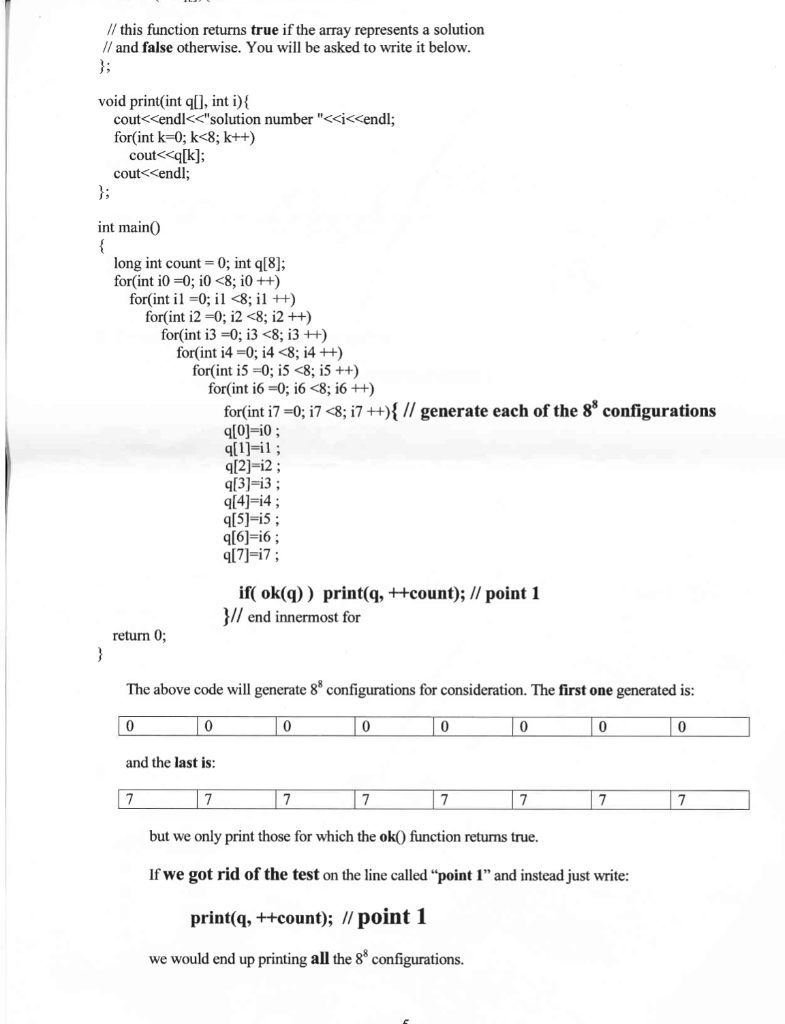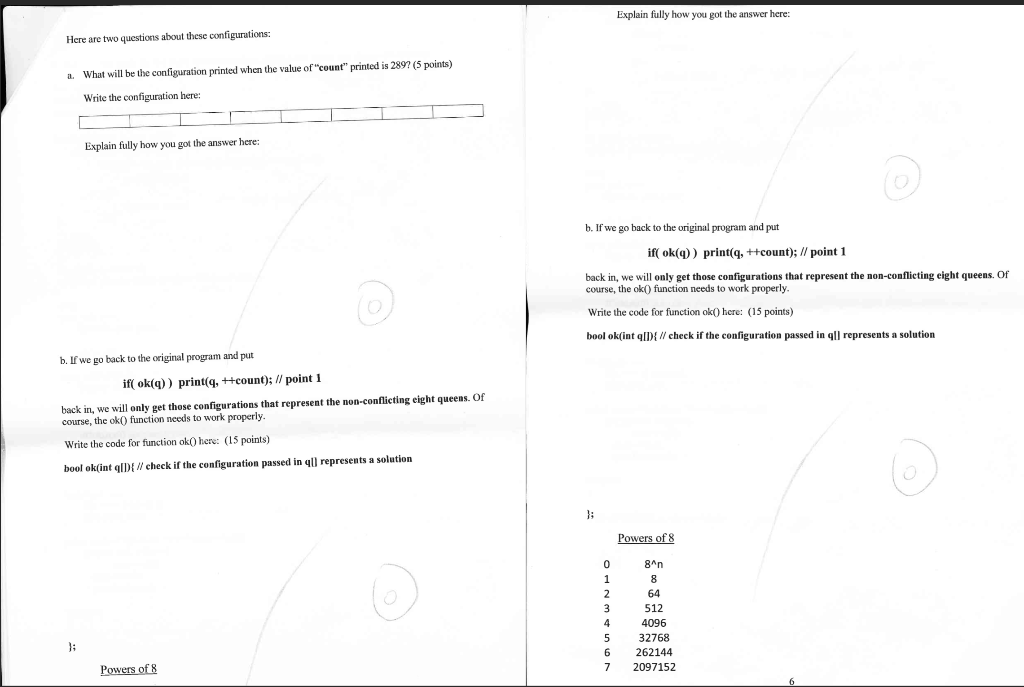Question
So tis is code for 1D 8 queens no goto, but done. by brute force. I completely understand this program and some of the question
So tis is code for 1D 8 queens no goto, but done. by brute force. I completely understand this program and some of the question that are posted on this page. Sorry for the duplicate photos they're just attached like that.
So for the question where it asks to write the Ok function I already know it, its:
bool ok(int q[c], c){
for (int i = 0; i
if (q[i] == q[c]) || (abs(q[i] -q[c]) == (c - i)) {
return false;
}
}
return true;
However, I dont know how to do question a, which says what will be the 289th configuration. How do i calculate this? And lets say instead of the 1d* queens being a 8^8, what if it was a 4^4? How would i calculate it then? If i could get help with all the question then that would mean a lot. Thank you. Indepth response would be appreciated.
c

Step by Step Solution
There are 3 Steps involved in it
Step: 1

Get Instant Access to Expert-Tailored Solutions
See step-by-step solutions with expert insights and AI powered tools for academic success
Step: 2

Step: 3

Ace Your Homework with AI
Get the answers you need in no time with our AI-driven, step-by-step assistance
Get Started


